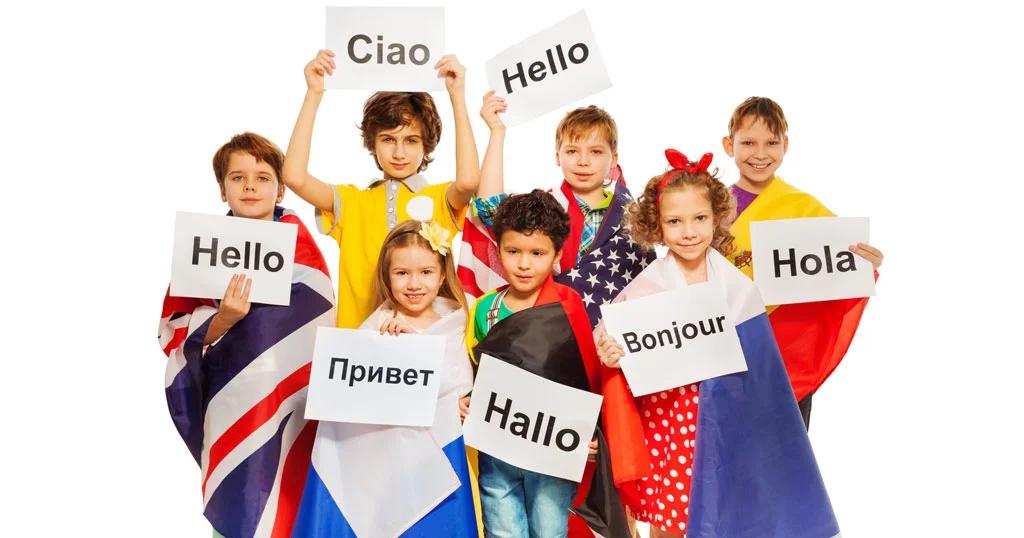As an expatriate teacher and school principal, I was often asked by parents how they can support their child’s learning of two languages at home. Parents were eager to ensure their children could speak English fluently, as it is the international language of business, but they also wanted to maintain their native language.
This got me thinking: what does being bilingual really mean? And how can parents effectively support the learning of two or more languages?
In essence, being bilingual means the ability to understand and communicate in two (or more) languages, including speaking, writing, and reading. In the early years, bilingualism often develops naturally through exposure to different languages. As children grow older, it can be nurtured through formal learning and consistent practice.
Early exposure is key to bilingual development and babies are born ready to learn. Research has proven that a child’s brain growth is rapid between 0 to 5 years, completing at least 90% of it’s growth during this period. It has also been discovered that the first window of opportunity for language comes early. Babies are born able to distinguish the sound of all languages, but by six months of age, they can no longer recognize sounds that are not in their native language.
With this knowledge we can then understand how important it is for bi-lingual children to be exposed to multiple languages early and often. Think of it as immersion in a language-rich environment—books, music, TV shows, and everyday conversations are all valuable tools for language exposure. At this young age they are not having to actively try and learn a language, they are organically learning by osmosis.
Some families choose to speak in multiple languages in their daily interactions with their children and others opt for each parent to choose one language that they exclusively use, so that the children are immersed in two languages.
Consistency is crucial, especially when it comes to real-life language practice. Encourage your child to engage in both languages inside the home and outside the home through playdates, cultural activities, or travel. Playdates with other children who speak the second language can boost your child’s confidence and reinforce their language skills in natural settings.
Patience and support are essential throughout this process. In the early years your child may mix languages or show a preference for one over the other, and that’s completely normal. Each child’s language development will be individual. Just remember to celebrate your child’s success in both languages. By doing so, you’re helping them build lifelong skills that will enrich their communication abilities and connect them with the world.

تربية اللغويين الصغار: كيف نرعى التعدد اللغوي في المنزل
كمعلمة ومديرة مدرسة مغتربة، كان العديد من الآباء يسألونني عن كيفية دعم تعلم أطفالهم للغتين في المنزل. كان الآباء حريصين على التأكد من أن أطفالهم يستطيعون التحدث باللغة الإنجليزية بطلاقة، لأنها اللغة الدولية للأعمال، لكنهم كانوا أيضًا يريدون الحفاظ على لغتهم الأم.
جعلني هذا أفكر: ماذا يعني أن تكون ثنائي اللغة حقًا؟ وكيف يمكن للآباء دعم تعلم لغتين أو أكثر بشكل فعال؟
ببساطة، يعني التعدد اللغوي القدرة على فهم والتواصل بلغتين (أو أكثر)، بما في ذلك التحدث والكتابة والقراءة. في السنوات الأولى، يتطور التعدد اللغوي بشكل طبيعي من خلال التعرض للغات مختلفة. ومع تقدم الأطفال في السن، يمكن تعزيزه من خلال التعلم الرسمي والممارسة المستمرة.
التعرض المبكر هو المفتاح لتطور التعدد اللغوي، والأطفال يولدون وهم مستعدون للتعلم. أظهرت الأبحاث أن نمو دماغ الطفل يكون سريعًا بين سن 0 إلى 5 سنوات، حيث يتم نمو ما لا يقل عن 90% من دماغه خلال هذه الفترة. كما تم اكتشاف أن نافذة الفرص الأولى للغة تأتي في وقت مبكر. الأطفال يولدون وهم قادرون على التمييز بين أصوات جميع اللغات، لكن بحلول سن الستة أشهر، لا يستطيعون التعرف على الأصوات التي ليست في لغتهم الأم.
مع هذه المعرفة، يمكننا أن نفهم أهمية تعرض الأطفال ثنائيي اللغة للغات متعددة في وقت مبكر ومتكرر. فكر في ذلك كما لو كان غمرًا في بيئة غنية باللغة—الكتب، والموسيقى، والعروض التلفزيونية، والمحادثات اليومية هي جميعها أدوات قيمة للتعرض للغة. في هذا العمر الصغير، لا يحتاج الأطفال إلى بذل جهد نشط لتعلم اللغة، بل يتعلمون بشكل عضوي عبر الامتصاص.
يختار بعض الأسر التحدث بلغات متعددة في تفاعلاتهم اليومية مع أطفالهم، بينما يختار البعض الآخر أن يختار كل والد لغة واحدة يستخدمها حصريًا، بحيث يتم غمر الأطفال في لغتين.
الثبات أمر بالغ الأهمية، خاصة عندما يتعلق الأمر بممارسة اللغة في الحياة الواقعية. شجع طفلك على التفاعل مع اللغتين داخل المنزل وخارجه من خلال اللقاءات الاجتماعية، الأنشطة الثقافية، أو السفر. يمكن أن تعزز اللقاءات الاجتماعية مع أطفال آخرين يتحدثون اللغة الثانية من ثقة طفلك وتعزز مهاراته اللغوية في بيئات طبيعية.
الصبر والدعم أمران أساسيان طوال هذه العملية. في السنوات الأولى قد يخلط طفلك بين اللغتين أو يظهر تفضيلًا لإحداهما على الأخرى، وهذا أمر طبيعي تمامًا. سيتطور تعلم اللغة لدى كل طفل بشكل فردي. فقط تذكر أن تحتفل بنجاح طفلك في كلا اللغتين. من خلال ذلك، أنت تساعدهم في بناء مهارات ستستمر مدى الحياة، وستثري قدراتهم في التواصل وتربطهم بالعالم.

